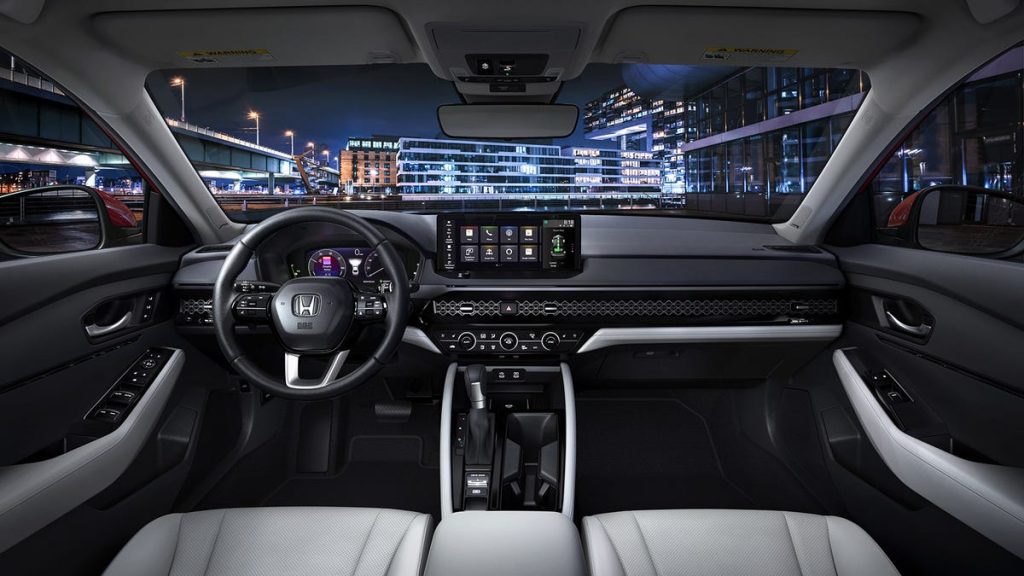Honda Has Discovered the Massive Sales Potential of Over-the-Air Updates

The interior of the new 2023 Honda Accord.Image: Honda
Every couple of weeks, some automaker publicizes a plan to overhaul its infotainment software, making it faster, smarter, and able to reach more aspects of the vehicle. They evangelize the convenience of “over-the-air” updates — something that cars have been capable of for the last 10 years — with an eye toward the future of the ever-evolving “ownership experience.” Today, that automaker is Honda; and the future it envisions sound like it’ll probably require your credit card.
The story starts with the new 2023 Honda Accord, which will be the brand’s first with Google Built-In — an automotive software platform that ties a user’s Google Account to vehicle functions and services. The Google Assistant will feature prominently for spoken commands, as will Maps and the Google Store — which sounds like the Google Play Store, where apps are sold on Android phones. Really though, this has less to do with Google and more with Honda’s desire to “add function two, three or eight years” after a car is sold. From Automotive News:
“Our focus is really to put the customer in the middle of the equation, so in that sense, the connected-vehicle experience it offers is essential,” [Jay Joseph, American Honda Motor Co.’s vice president of Connected, Autonomous, Shared and Electrified] said.
Facilitating over-the-air software updates is not a new idea in automotive.
Joseph says Honda already has been delivering content to many of its vehicles over the air to reflash existing systems or give service updates.
“The new value of OTA,” he said, “is evolving to include upgrade opportunities.
“By combining the hardware with the software, we can optimize the experience for each individual where they can change functionality or performance after the vehicle purchase.”
Nowhere in this article is the word “unlock,” “payment” or “subscription” mentioned, nor the insinuation that “changing functionality or performance” after purchase may require, you know, more purchases. “Value” is though, and I have to wonder value for whom.
Automakers love OTAs, and it’s pretty obvious why: it provides a whole new post-sale revenue stream, and allows them to double-, triple- or quadruple-dip every time a car changes hands, if they really wanted to. That’s why no matter how many times the world shames BMW for pushing heated seat subscriptions, it gets all quiet and roars right back. Car companies are positively salivating over this stuff.
And some customers are actually behind it, too. Every time I write anything about software-enabled features, there are a slew of commenters who, at some level, are fine with paying again down the line for new capabilities their car may not have shipped with. When the expense involves hardware that’s already present in the car at the time of sale, though, is where people tend to get skeptical, and even lawmakers start to notice. It’s also no coincidence that this trend is being pushed alongside electric vehicles, which are comprehensively governed by software:
[Joseph] declined to say whether other Honda vehicles might adopt Google Built-In, but he noted that the concept of layering software on top of hardware fits better with electric vehicles because of how connected they already are.
“The electronic platforms of EVs are more compatible with this network connectivity concept than conventional cars,” Joseph said. “And that creates new possibilities in the electrified era with a software-defined vehicle.”
All this is to say there’s no shame in buying, say, self-parking capabilities in your future Honda if you really want to, and surely not everything Honda pushes over-the-air will necessarily be paid. But just remember that anytime a car company discusses transforming “ownership” or “adding function” in a “software-defined vehicle,” there’s a chance they might be glossing over with those buzzwords. Chances are it involves a transaction.



